This past week in science, 6th graders learned what competition looks like within an ecosystem with fruit loops!
At the start of the activity every student was given an animal that they were going to act as in the activity. Students were then asked to take however many fruit loops they thought their animal needed to survive. Some students took huge handfuls, others took smaller handfuls. Students then sorted their fruit loops into piles by color. Then, the game truly started…
Each color of fruit loop resembled different aspects of an ecosystem.
Green = plants
Blue = water
Red = meat
Yellow = shelter
Purple = pollution
Students were then given different scenarios where they lost many of their fruit loops. For example, if you are an herbivore get rid of all your red “meat” fruit loops. If you are a carnivore, get rid of all your green “plant” fruit loops. Students were then given scenarios where they lost many of their shelters, waters, and foods. After a few rounds, some animals started to die because they began to run out of resources to survive.
Afterwards, students were asked to think about competition within an ecosystem and what that means. Some students wrote about how there are not enough resources for everyone to survive and that animals have to compete for resources to survive in their ecosystem. This is something we will continue to talk about and discuss this week.


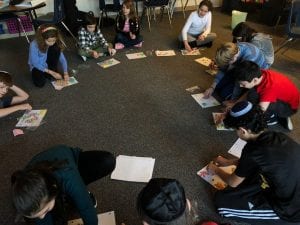
This week in 5th grade science, we learned about conductors and insulators. Students were asked the investigative question, “What materials will slow the transfer of energy better than others?” Along with this, their goal for this project was as follows: Create the best insulator for a plastic water bottle that will keep the water in it the coldest for the longest amount of time.
Students worked with their groups using their science text book, as well as online resources to research what materials are the best insulators. They then created a plan and sketch of what they were going to build. Finally, today, we started the building process where students made their sketches and ideas come to life.
Next week, students will continue to build. Once everyone is done we will test our insulators by measuring the initial temperature of the cold water and then checking our thermometer every 5 minutes to see if our temperature is getting warmer or staying the same. After our first test, students will go back to their design and make improvements to make their insulators even better!


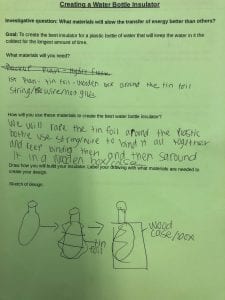
Over the past two weeks in ETC we have progressed from mini challenges to longer fairy tale challenges that will take two to three weeks to fully complete. To kick off this unit students read the story of Rapunzel to get a refresher on what the fairy tale is all about. As a class, we discussed that the main problem in the story is that Rapunzel is trapped in her tower and cannot get out…. Hello, challenge number one!
Students were asked to figure out a way to solve Rapunzel’s problem by creating some sort of contraption, device, tool, etc. that will allow Rapunzel to get out of the tower safely without using her hair. Students spent two days brainstorming, planning, and explaining why their plan would work best to get Rapunzel out of the tower.
This past Wednesday, students finally were given the “okay” to start the building/creating process. Students have already begun to create such amazing things! Some kids built Rapunzel’s tower, some began to build what they needed to remove her from the tower, and some began to build a model of Rapunzel herself! Students have only begun the creating process. Stay tuned to see what their final model looks like!
Have a great weekend and Happy Chanukah!

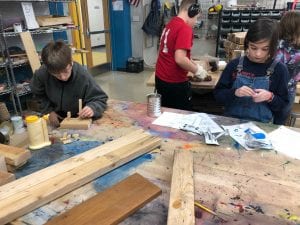

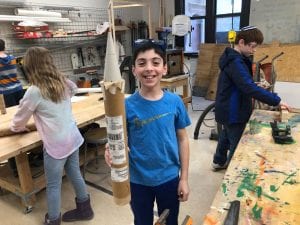
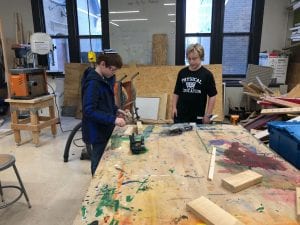
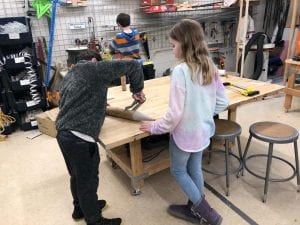

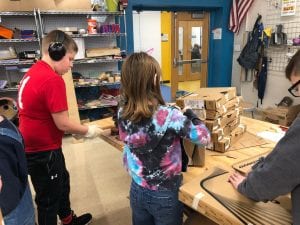

This week in 5th grade science we studied potential and kinetic energy by creating rubber band boats. Students were given 2 rubber bands, 5 popsicle sticks, cardboard, 24 inches of tape, and 4 paperclips to use when building their boats. Along with focusing on energy, this project also required students to follow the engineering process shown below. After students were given the challenge, they explored and documented different possibilities of boat creations they could make. Once each group came to a consensus on what they would create, they designed and built their prototype of their boat. For every group, their first test in the water did not go exactly as they had hoped. Some boats tipped over, some boats started to sink, and some boats barely moved through the water at all. However, because of the engineering process, students then had to go back to their boats and find three ways to improve the overall design and structure of it. Students then created a new boat based on the changes they made to make it better. During the second test it was amazing to see the improvements each group made. Almost every boat stayed afloat and moved through the water at a faster pace than the first time, which was great to see.
The engineering process allows us to slow down when creating, designing, and building, and gives us the chance to improve and further our thinking to make our creations even better. Pretty cool, if you ask me 🙂

Tomorrow (12/6) will be an all-school pajama day to celebrate Chanukah in a fun and inclusive way. I know that tonight I will be searching through my drawers to find my onesie… Can’t wait to see everyone in their PJ’s tomorrow!
Have a great night and Happy Chanukah!















